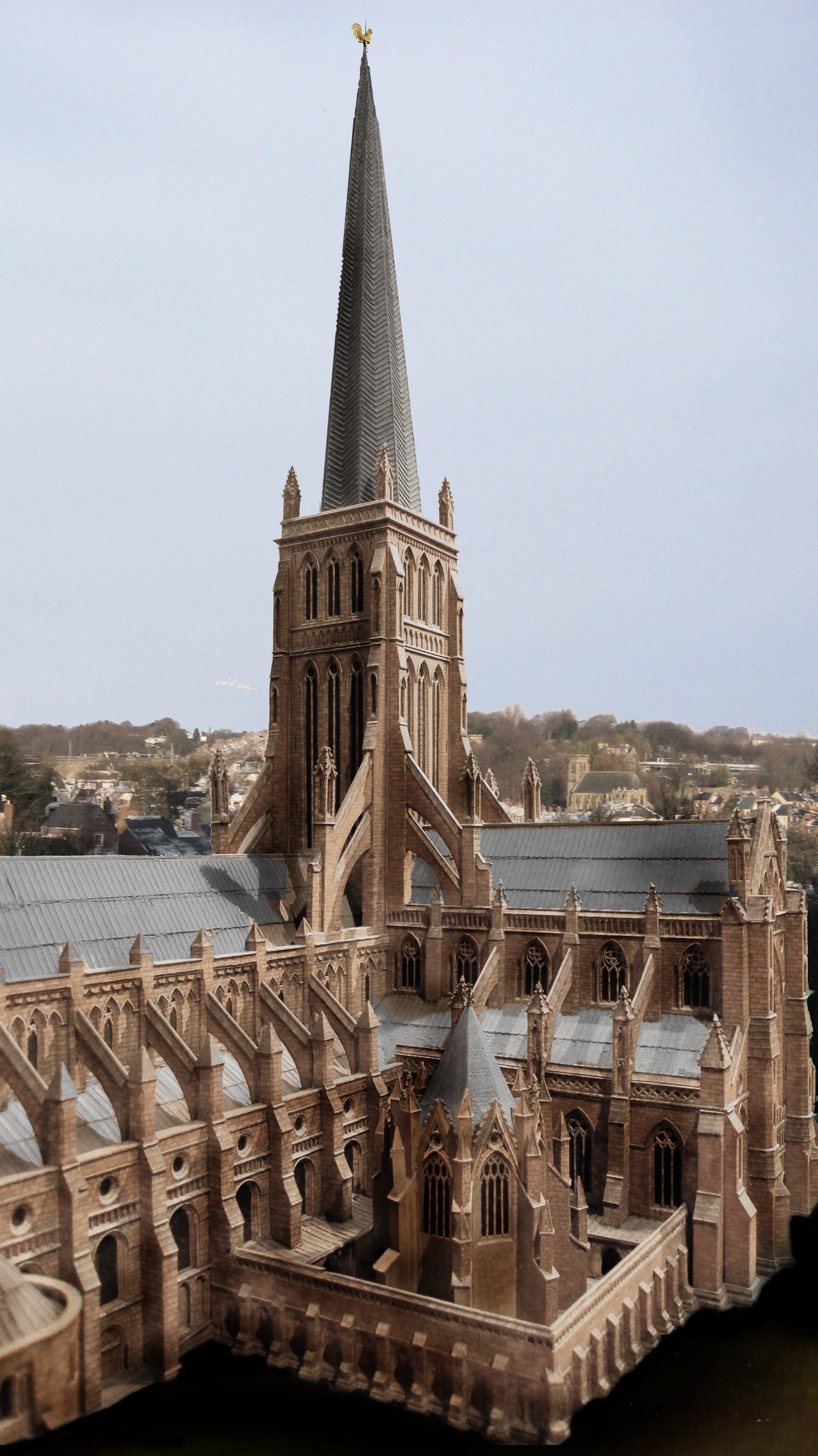
Old St Paul's Cathedral
Old St Paul's Cathedral was the cathedral of the City of London that, until the Great Fire of 1666, stood on the site of the present St Paul's Cathedral. Built from 1087 to 1314 and dedicated to Saint Paul, this building was perhaps the fourth such church at this site on Ludgate Hill, going back to the 7th century.[1]
Old St Paul's Cathedral
Cathedral and canonry destroyed by fire—1087, 1666
3
- c. 604–675
- c. 685–961
- c. 962–1087
- 1087–1666
- City of London
- Paddington
- St Margaret
- St Marylebone
Work on the cathedral began after a fire in 1087, which destroyed the previous church. Work took more than 200 years, and over that time the architecture of the church changed from Norman Romanesque to early English Gothic. The church was consecrated in 1240, enlarged in 1256 and again in the early 14th century. At its completion in the mid-14th century, the cathedral was one of the longest churches in the world, had one of the tallest spires and some of the finest stained glass.
The continuing presence of the shrine of the 7th century bishop Saint Erkenwald made the cathedral a site of pilgrimage in the Middle Ages.[2] In addition to serving as the seat of the Diocese of London, the building developed a reputation as a social hub, with the nave aisle, "Paul's walk", known as a business centre and a place to hear the news and gossip on the London grapevine. During the Reformation, the open-air pulpit in the churchyard, St Paul's Cross, became the place for radical evangelical preaching and Protestant bookselling.
The cathedral was in structural decline by the early 17th century. Restoration work begun by Inigo Jones in the 1620s was temporarily halted during the English Civil War (1642–1651). In 1666, further restoration was in progress under Sir Christopher Wren when the cathedral was devastated in the Great Fire of London. At that point, it was demolished, and the present cathedral was built on the site.[3]
Nicholas Stone's 1631 monument to John Donne survived the fire. It depicts the poet, standing upon an urn, dressed in a winding cloth, rising for the moment of judgment. This depiction, Donne's own idea, was sculpted from a painting for which he posed.[74]
No further memorials or tombs survive of the many famous people buried at Old St Paul's. In 1913 the letter-cutter MacDonald Gill and Mervyn Macartney created a new tablet with the names of lost burials which was installed in Wren's cathedral:[75]







